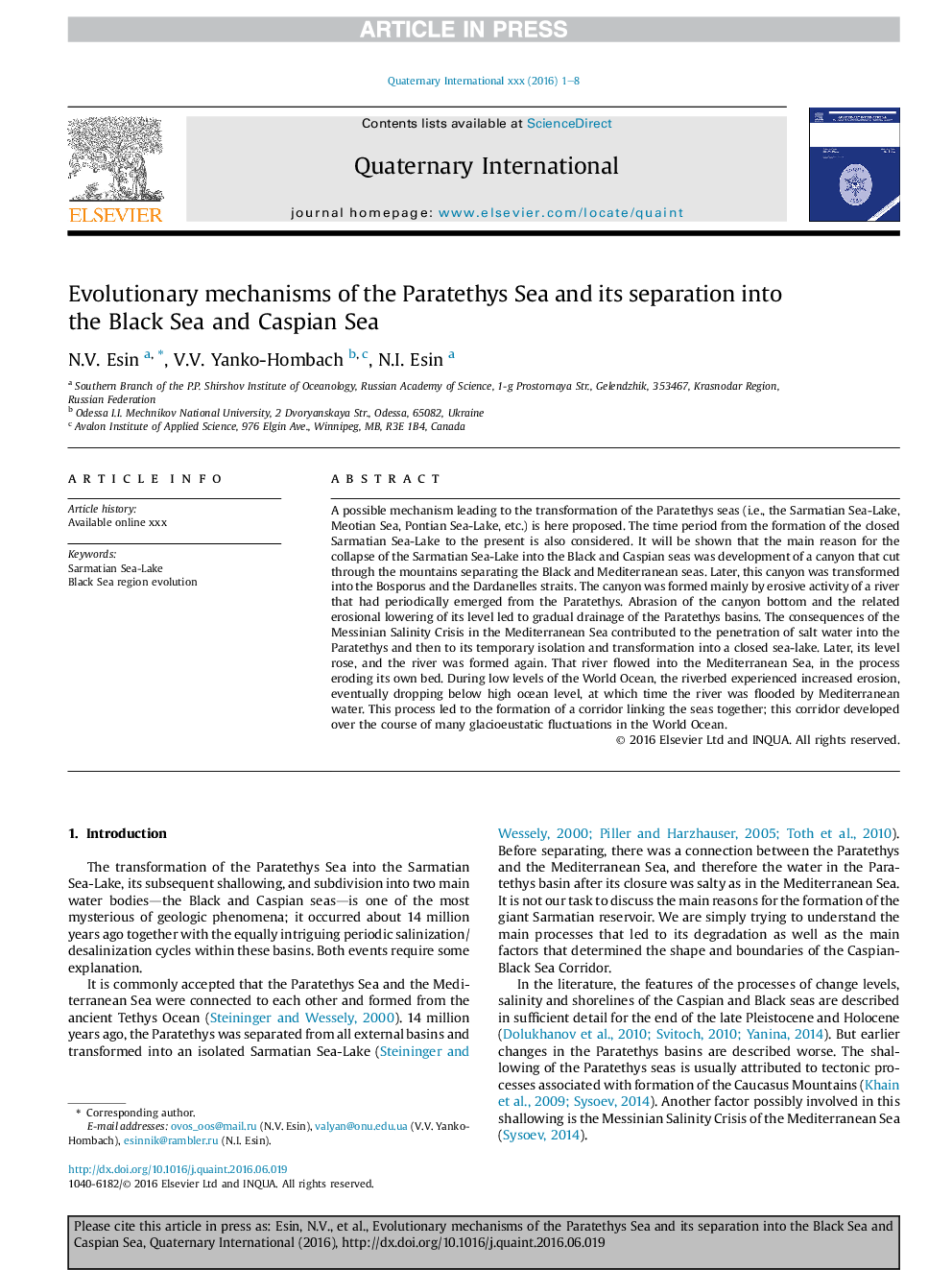| Article ID | Journal | Published Year | Pages | File Type |
|---|---|---|---|---|
| 7450808 | Quaternary International | 2018 | 8 Pages |
Abstract
A possible mechanism leading to the transformation of the Paratethys seas (i.e., the Sarmatian Sea-Lake, Meotian Sea, Pontian Sea-Lake, etc.) is here proposed. The time period from the formation of the closed Sarmatian Sea-Lake to the present is also considered. It will be shown that the main reason for the collapse of the Sarmatian Sea-Lake into the Black and Caspian seas was development of a canyon that cut through the mountains separating the Black and Mediterranean seas. Later, this canyon was transformed into the Bosporus and the Dardanelles straits. The canyon was formed mainly by erosive activity of a river that had periodically emerged from the Paratethys. Abrasion of the canyon bottom and the related erosional lowering of its level led to gradual drainage of the Paratethys basins. The consequences of the Messinian Salinity Crisis in the Mediterranean Sea contributed to the penetration of salt water into the Paratethys and then to its temporary isolation and transformation into a closed sea-lake. Later, its level rose, and the river was formed again. That river flowed into the Mediterranean Sea, in the process eroding its own bed. During low levels of the World Ocean, the riverbed experienced increased erosion, eventually dropping below high ocean level, at which time the river was flooded by Mediterranean water. This process led to the formation of a corridor linking the seas together; this corridor developed over the course of many glacioeustatic fluctuations in the World Ocean.
Related Topics
Physical Sciences and Engineering
Earth and Planetary Sciences
Geology
Authors
N.V. Esin, V.V. Yanko-Hombach, N.I. Esin,
